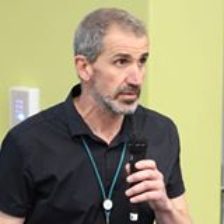
(3-minute read) – This is a Tribute To Merton, Thomas Merton, born in 1915. His life lead him to spending the last twenty-seven years of his life as a trappist monk. The last three years of these were as a hermit.
During this time he wrote many books and essays on the contemplative life, Christian theology and Zen Buddhism. Most of his life and writings were about his search for his authentic and deepest self.
Merton describes this struggle as between the false self and the true self.
“Thus I use up my life in the desire for pleasures and the thirst for experiences, for power, honour, knowledge and love, to clothe this false self and construct its nothingness into something objectively real”.
Finding true self involves letting go of the false self and its attachments. In the place of all the concoctions, begun from the moment of birth, comes a deeper acceptance and appreciation of the true self. This deeper dimension is an experience of peace and love that far transcends the consolations of attachment, in which love and acceptance were previously sought.
The first step is to recognise ‘our true condition’. The self created around each human is an imposter, a stranger, and unreal. It is impossible to evolve to newness, to the true self, if one remains deluded by this imposter. It is impossible if one remains attached to the passport picture identity of self, or one “assumes he is a person because there appear to be other persons who recognise him when he walks down the street”.
Letting go
When this level of self becomes unsatisfactory, an inkling yearning for deeper recognition in a more intimate relationship surfaces. The process of letting go has commenced. One feels called to the practice of letting go. This brings with it much egocentric resistance, because a lifetime has been spent drawing some consolation for the ego from these attachments.
In reality we remain still governed by unconscious forms of selfishness. There is no total escape until we finally leave this life. The solution is death. We must ‘die in order to be re-born’. This is understood in all its seriousness to mean acceptance of nothingness and expectation of nothing. It is in this emptying of self that deep peace washes over the soul and a sense of the selfless true self emerges.
This ‘dying to be reborn’ does not happen once, or in a linear sequence throughout life. It rather repeats itself in an ongoing cycle throughout life, with the cycle spiraling ever closer to the centre. The process is propelled throughout by the ongoing practice of letting go. In so doing, humans are participating in the common evolutionary process of the universe, characterised by cycles of attachments, fusions and fissions, light and dark and light again, until the eternal end state is reached.
Follow me on Twitter @MichaelHowardZA for regular updates and join the conversation on Facebook about my articles.

Leave a Reply